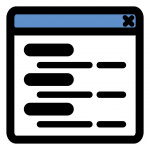You’re Taking Breaks The Wrong Way, Here’s How To Fix That
In our always-on, 100% hustle, productivity at all costs culture, it’s hard to justify taking a few minutes to yourself during the workday, let alone a full lunch hour. Even a recent Apple ad celebrated entrepreneurs working so hard, they’re not able to see their children.
But this style of working is unsustainable. We physically can’t work at 100% capacity, 100% of the time. We need breaks. But how do you do it properly? Here are seven science-backed studies that can help you maximize your downtime.
1. Take A Break Every 52 Minutes
Concentration and focus are our ultimate productivity weapons, and they need to be protected. Yet they’re constantly under attack and used up resisting the “bad” choices that surround us.
- You resist the urge to surf the web when you’ve got work to do
- You resist ordering a burger at lunch
- You resist checking emails when you’re working on a project
All these moments of resistance add up. And to keep our focus and concentration strong all day long, we need to treat our willpower like the muscle it is.
For years, productivity methods like Pomodoro have suggested that working in a series of short bursts or “sprints” followed by short breaks is the best way to keep yourself on track. But just how long should these bursts be? While the Pomodoro technique advocates for shorter sprints of 25 minutes followed by a 5-minute break (with a longer break after every 4 “sessions”), research from the team at DeskTime came up with a different number.
After analyzing 5.5 million daily records of how office workers are using their computer (based on what the user self-identified as “productive” work), they found that the top 10% of productive workers all worked an average of 52 minutes before taking a 17 minute break.
Why does this work? There’s a number of reasons:
- By knowing you have a break coming up, you’re more likely to stay focused and work with purpose.
- Working for any longer can cause cognitive boredom.
Your body wasn’t meant to sit for 8 hours a day. - You’ve probably heard that sitting is the new smoking, and while the statement makes for better headlines than fact, it’s true that getting some activity at regular intervals in your day will improve your health and mental focus.
2. Distract Yourself To Recharge Your Focus
The hardest part about taking regular breaks during your workday is that it can be incredibly hard to switch off. But research shows this intense focus actually makes us less focused in the long run.
In a study on attention in the journal Cognition, University of Illinois psychology professor Alejandro Lleras compared how our brains naturally stop registering sights, sounds, and feelings if they remain consistent for a period of time with how they react to thoughts that remain consistent for long periods of time. “If sustained attention to a sensation makes that sensation vanish from our awareness, sustained attention to a thought should also lead to that thought’s disappearance from our mind,” Lleras explains.
Instead of thinking about the problem without stop, we need to create distractions that take our attention away from the task at hand so we can come back at it with a fresh mind.
One way to do this is to overload your cognitive abilities by multitasking on your break. It might seem counterintuitive to add more cognitive strain during a break, but the key here is to force your mind off the work at hand.
3. Take In The Great Outdoors
Staying in an artificially lit, stuffy office, coworking space, or cafe all day might be a necessity for getting things done. But escaping that space for even a few minutes during the day can have huge benefits.
Studies show that just spending time in nature can help alleviate mental fatigue by relaxing and restoring the mind. Additionally, increased exposure to sunlight and fresh air helps increase productivity and can even improve your sleep. In one study, researchers found that workers with more exposure to natural light during the day slept an average of 46 minutes more per night.
And what if you can’t get outdoors during your break? If you can’t go to nature, you can always bring nature to you. Simply being around natural elements can have the same effect. Just seeing plants around you can improve morale, increase satisfaction with your work, and make you more patient.
4. Give Your Mind The Right Fuel
One of the most common reasons we take a break is because our body tells us we need to. When your stomach is grumbling louder than the thoughts in your head, you have to do something about it. Unfortunately, choosing the wrong food or beverage can deplete our mental energy rather than restore it.
When you’re hungry, a hormone produced in the stomach called ghrelin signals the neurotransmitter NPY in the brain that your body’s energy levels are low and you need food.
NPY lives in the hypothalamus–the section of your brain that controls fatigue, memory, and emotion–and essentially is always making sure you have enough energy to function. When you’re hungry and your energy level dips, it takes over and reminds you to eat.
Once you do eat, your food is broken down into glucose–fuel for your brain. But unlike your car that doesn’t care as long as the tank isn’t totally empty, your brain works best with a consistent level of glucose in your blood–25 grams, according to University of Roehampton researcher Leigh Gibson.
Now, you can get that 25 grams from a snack bar, banana, or carbs like bread, rice or pasta, but a recent study from The American Journal of Clinical Nutrition found that protein not only gives you that quick hit of glucose, but is the only macronutrient to enhance cognitive abilities longer than 15-20 minutes after ingestion.
To keep your brain working at peak performance, opt for a snack on your break that includes a higher level of protein, such as a small serving of chicken, beef, or fish, nuts or nut butter, or a protein supplement. And remember to keep your portions small to reduce the risks of a post-snack crash.
5. Exercise Your Eyes
Our eyes take the burden of much of our tech-fueled lives. Most of us spend around 6-9 hours a day on a digital device with 28% locking their eyes on one type of screen or another for 10+ hours. Your eyes can begin to feel strain in as little as two hours, which is why taking a vision break during the day is so important.
Luckily, there’s a simple exercise that will help reduce your eye fatigue: 20-20-20. Every 20 minutes look away from your computer screen and focus on an item at least 20 feet away for at least 20 seconds. Easy, right?
Beyond just taking care of your eyes during your breaks, there are a few other simple steps you can take to protect your vision all day long:
- Dim your lights: Your computer screen should be the brightest thing in the room.
- Reduce glare: When one spot on your screen is brighter than others, your eyes have a hard time adjusting to it which can cause added strain. Try an anti-glare screen cover, clean your screen regularly, and make sure you’re not too close to a window.
- Make your workspace more eye-friendly: Most of us have our workspace set up all wrong for our eyes. We stare down at a laptop screen or crane our necks up to look at our monitors. Proper ergonomics help reduce fatigue in your entire body but your eyes especially.
6. Hit The Gym (Or At Least Go For a Walk)
Exercise is one of the easiest ways to reduce fatigue, boost energy, and increase your productivity throughout the day. Researchers from the University of São Paulo discovered that just 10 minutes of exercise is enough to boost memory and attention performance throughout the day.
If you don’t want to change into workout clothes or risk spending the rest of the day with sweat stains, just going for a simple walk has been shown to refresh memories and increase creativity. In a report from the American Psychology Association, researchers discovered that walking increased 81% of participants’ creativity.
To get an added bonus, hit the block without your phone. A study from Social Psychology discovered that simply having our phone around us can increase anxiety and lower your overall cognitive performance by as much as 20%.
7. Simply Sit And Let Your Mind Wander
So far we’ve looked at a number of things you can do on your break to replenish your energy. But what about just doing nothing?
A report published in Science magazine found that simply letting our minds wander by zoning out or daydreaming has similar benefits to meditation. When we stop paying attention to anything, our brain’s Default Mode Network takes over which gives our overworked prefrontal cortex–where complex processes like problem-solving, memory, reason, and logic take place–a well-deserved rest.
Not only that, but taking some time to let your mind drift can help you come up with more novel ideas and uncover hidden answers when you’re back at work.
NYU psychology professor Scott Barry Kaufman found that daydreaming is a fantastic way for us to access our unconscious and allow ideas that have been silently incubating to bubble up into our conscious. Meaning that while you think you’re doing nothing, you’re actually mining the depths of your mind for more creative solutions to the problems you’re facing. It’s a win-win.
In our culture of doing, taking regular breaks can be seen as lazy or unproductive. But when done correctly, breaks are actually the ultimate productivity hack, because they let us do more in less time. So stop glorifying long days and burnout-inducing hours and take a break. You deserve it.
A version of this article originally appeared in Zapier and was adapted with permission.
Fast Company , Read Full Story
(37)













